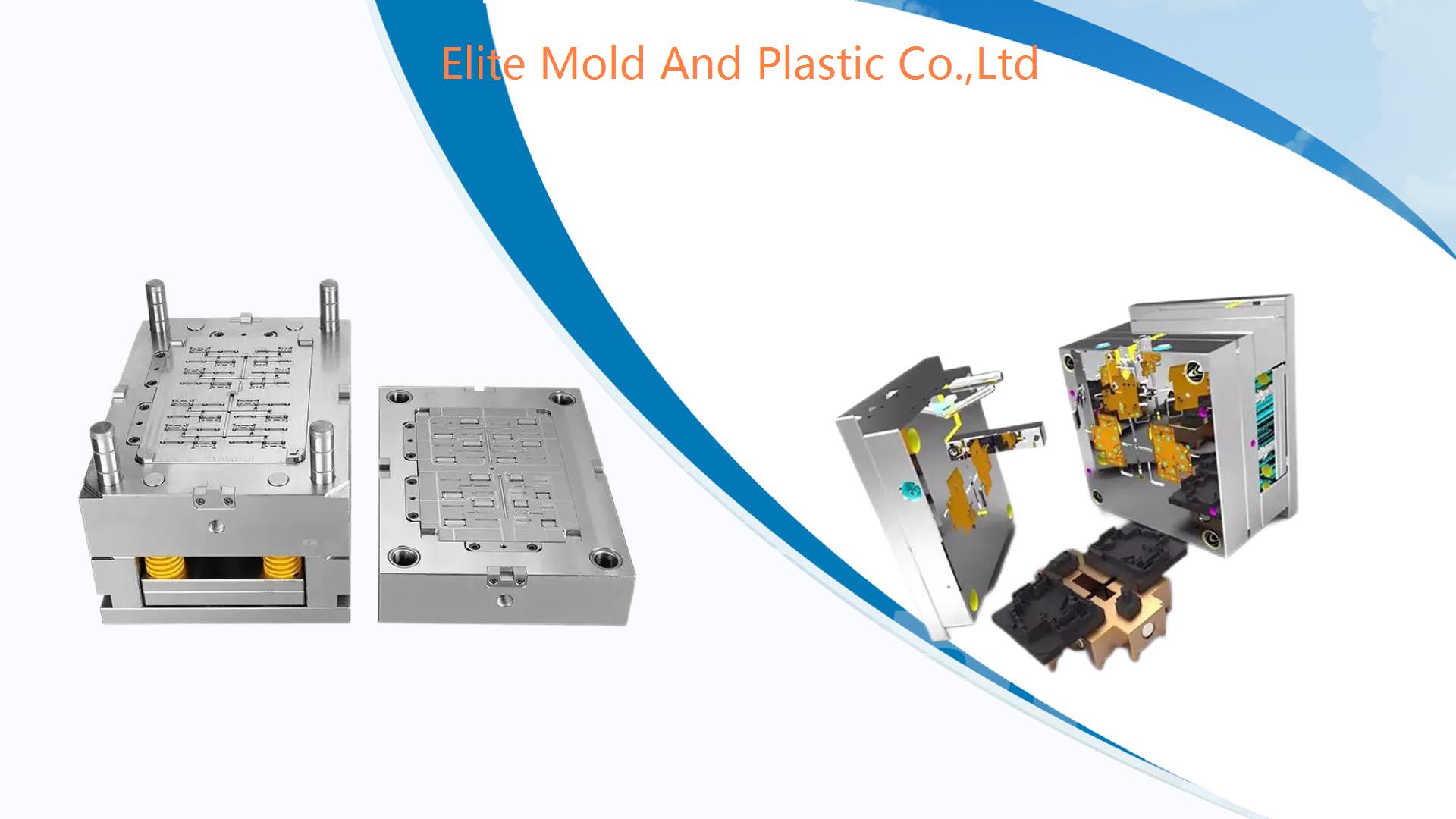Achieving Consistency with Proper Mold Wall Thickness in Plastic Part Design
As an experienced plastic injection mold manufacturer based in China, Elite is dedicated to producing high-quality injection molds and molded parts at competitive prices. One of the key factors that significantly impacts the success of any injection-molded part is the mold wall thickness. Proper mold wall thickness ensures not only the structural integrity of the part but also optimal manufacturing efficiency. In this article, we’ll discuss the importance of proper mold wall thickness and the best practices for achieving consistency in plastic part design.
Why Mold Wall Thickness Matters
Mold wall thickness plays a vital role in determining the quality, strength, and durability of the molded part. Achieving the right wall thickness helps to:
- Ensure uniform cooling, which reduces defects such as warping and shrinkage
- Improve part strength and durability
- Reduce material consumption and cycle times
- Minimize stress concentration and enhance the overall appearance of the product
Proper mold wall thickness also directly impacts the cost-effectiveness of the plastic injection molding process, making it a critical aspect of part design.
Factors to Consider in Mold Wall Thickness Design
At Elite, we apply years of expertise to carefully assess each project and ensure that the wall thickness is optimized for the specific requirements of the part. When designing the wall thickness of plastic parts, the following factors must be considered:
1. Material Selection
Different plastic materials have varying flow properties, shrinkage rates, and cooling behaviors, which affect the optimal wall thickness. Common materials used in plastic injection molding include:
- ABS (Acrylonitrile Butadiene Styrene): Typically requires thicker walls for improved strength.
- PP (Polypropylene): Can be molded with thinner walls due to its excellent flow characteristics.
- Nylon: Known for high strength, but may require thicker walls to reduce warping.
2. Part Geometry and Functionality
The shape and functionality of the part dictate how uniform the wall thickness should be. Complex geometries may necessitate variable wall thicknesses to ensure that the part can withstand mechanical stresses.
- Flat, large parts: These often benefit from slightly thicker walls to prevent warping during cooling.
- Thin-walled parts: Thin walls reduce material usage but require precise control over the injection molding process to avoid defects like flow lines.
3. Avoiding Warping and Sink Marks
Warping occurs when parts cool unevenly due to inconsistent wall thickness, leading to deformation. Similarly, sink marks may appear when thicker sections of the part cool slower than thinner sections, resulting in surface depressions. By designing uniform wall thickness throughout the part, Elite ensures:
- Minimal cooling defects
- Enhanced dimensional stability
- A smooth and uniform appearance

Best Practices for Achieving Consistent Mold Wall Thickness
At Elite, we follow industry best practices to design molds with consistent wall thickness, ensuring high-quality plastic parts for our clients.
1. Uniformity in Wall Thickness
Benefits of Uniform Wall Thickness
Maintaining a uniform wall thickness throughout the part design ensures:
- Even Cooling: Uniform cooling prevents internal stresses, reducing the likelihood of defects.
- Predictable Flow: Consistent wall thickness ensures a smooth and predictable flow of molten plastic within the mold cavity.
- Reduced Shrinkage: Consistency helps minimize uneven shrinkage, which could cause warping or dimensional inaccuracies.
Recommended Wall Thickness Ranges
For common plastics, the recommended wall thickness typically falls between 1.5 mm to 4 mm. However, the optimal thickness will depend on the specific material and the part's design requirements.
2. Tapering Walls to Aid Ejection
Draft Angles and Tapered Walls
In some designs, it is necessary to taper the walls slightly. Tapering helps in the ejection of the part from the mold without damaging the surface or distorting the shape. Elite ensures that any tapering in wall thickness is minimal to prevent excess variation while aiding the molding process.
- Draft Angle Guidelines: For most plastic parts, a draft angle of 1° to 2° per side is recommended.
3. Adjusting Wall Thickness for Specific Functional Areas
Reinforcing Key Areas
While uniform wall thickness is ideal, some parts require reinforcement in specific areas to enhance strength. In these cases, Elite strategically increases the wall thickness in critical regions without compromising the overall design. This is done to:
- Improve strength in areas that bear mechanical loads
- Allow for better integration of fasteners or hinges
- Minimize the risk of failure in high-stress areas
Adding Ribs and Bosses
To reinforce the part without unnecessarily increasing wall thickness, ribs and bosses can be added. These features improve strength and reduce warping while keeping the overall material usage low. Ribs should be designed to be no more than 60% of the adjacent wall thickness to prevent sink marks.
4. Preventing Material Buildup in Corners
Radii and Fillets
Sharp corners in plastic part designs can lead to stress concentration and material buildup, which increases the chances of defects. To avoid this, Elite designs corners with appropriate radii or fillets. This practice:
- Ensures smooth material flow during injection
- Prevents the formation of voids or weak points
- Enhances the overall strength of the part
Troubleshooting Common Wall Thickness Issues
Even with best practices, certain issues may arise during production. Here’s how Elite addresses common problems associated with improper mold wall thickness:
1. Warpage
Warping is often caused by uneven cooling due to variable wall thickness. To prevent warping:
- Ensure consistent wall thickness
- Optimize cooling times and temperatures
- Utilize proper material selection to reduce thermal expansion
2. Sink Marks
Sink marks appear when the material in thicker areas cools and shrinks faster than in thinner areas. Elite minimizes sink marks by:
- Designing thinner walls or using ribs for reinforcement
- Adjusting cooling rates to promote uniform cooling
- Using materials with lower shrinkage rates
3. Flow Lines
Flow lines are caused by the uneven flow of molten plastic in areas with drastic changes in wall thickness. By maintaining consistent wall thickness and using proper gate design, Elite reduces the likelihood of flow lines, ensuring a smooth surface finish.
Conclusion
Achieving consistent mold wall thickness is crucial for producing high-quality plastic parts through injection molding. As a trusted plastic injection mold manufacturer, Elite applies its expertise in mold design to ensure uniform wall thickness, minimize defects, and enhance the overall performance of the molded part. By adhering to industry best practices, we deliver superior products that meet our clients' exact specifications while maintaining cost efficiency.
If you are looking for a reliable partner in plastic injection molding, Elite is here to help. Contact us today to learn more about our services and how we can optimize your plastic part design with proper mold wall thickness and precision molding techniques.
Related news
Our Certificates
By co-operating with Elite Mold, you have selected one of the most reliable ISO 9001 certified plastic mold manufacturer, Elite Mold as a plastic injection mold manufacturer specializing in plastic injection mold and supplying plastic injection molding services for plastic mold design, prototype makings, mold flow analysis, precise machining, OEM services, ODM services and so on, building custom plastic injection molding. We are committed to enhance the Process optimized and quality of service, shorten lead time and assist in lowering inventory, by providing new products every year to bring in continuous and higher profits for our clients. The ability to produce mold at the International standard, strong engineering and mold design capability, aggressive delivery, competitive pricing and business integrity continues to be the success factor of Elite Mold.










